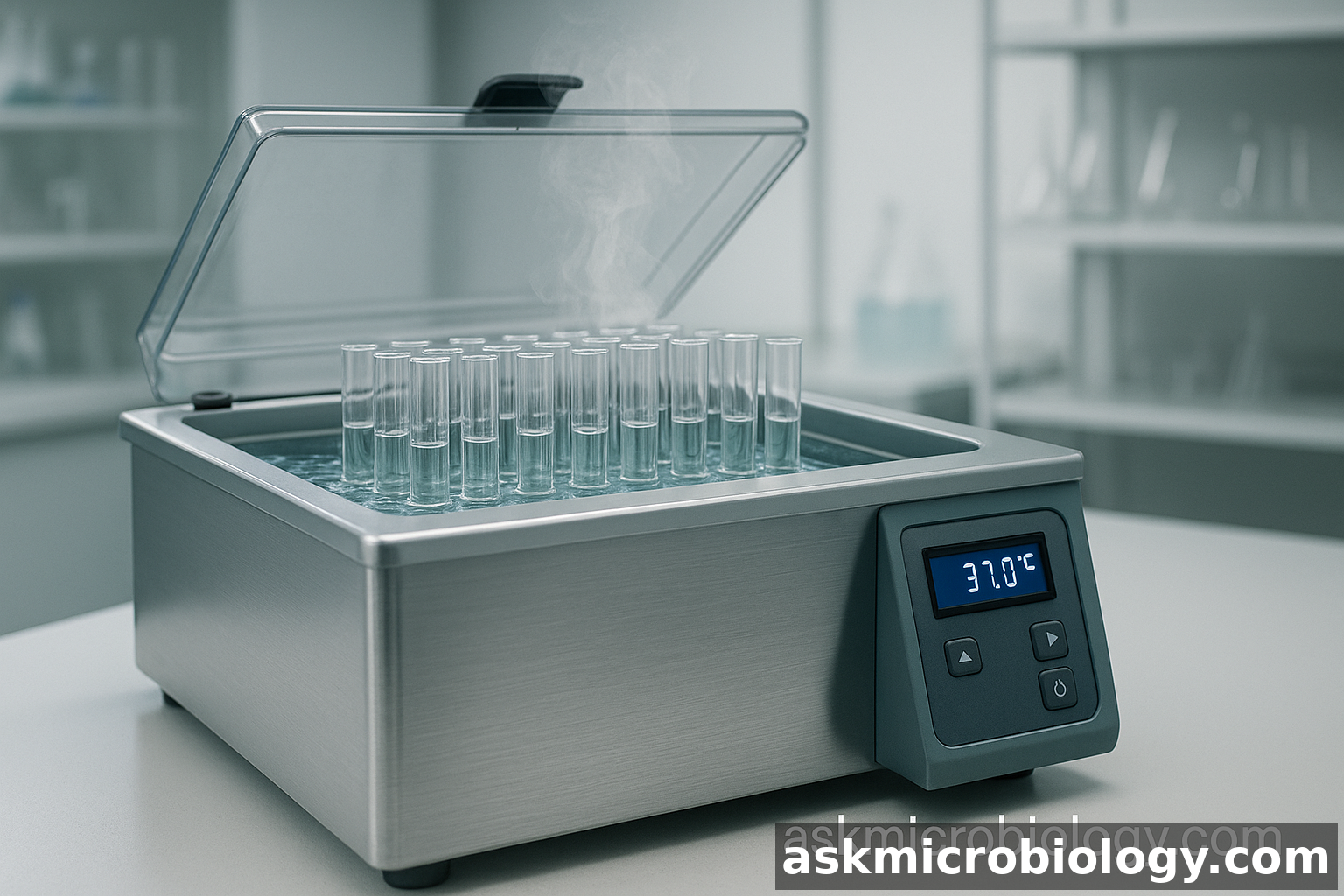Why Temperature Control Is Critical
Microbial enzymes are exquisitely temperature‑dependent. A 2022 Applied and Environmental Microbiology study of 48 E. coli strains showed that a deviation of ±1 °C from the optimal 37 °C reduced growth rate by 12 % on average.[1]
Typical Water‑Bath Applications
- DNA extraction: Proteinase K digestion at 56 °C; a 2023 inter‑lab trial found yield variability of >20 % when baths fluctuated ±2 °C.
- Serological testing: Complement inactivation at 56 °C for 30 min requires ±0.5 °C stability to avoid false positives.
- Mycobacterial culture: M. tuberculosis decontamination (NaOH‑NALC) is held at 37 °C; incorrect temps increased contamination rates from 6 % to 19 % in a WHO 2024 audit.
Key Performance Metrics
| Parameter | Recommended Spec | Impact on Results |
|---|---|---|
| Temperature Uniformity | ±0.2 °C | Prevents edge‑to‑center gradients in 2 L baths. |
| Stability (24 h) | ≤ 0.1 °C drift | Essential for overnight enzyme reactions. |
| Heating Rate | ≥ 2 °C/min | Reduces turnaround time between protocols. |
| Safety Cut‑off | 75 °C | Protects thermolabile reagents from overheating. |
Maintenance Checklist
- Verify calibration weekly with a NIST‑traceable thermometer.
- Replace water every 7 days or sooner if cloudy to prevent biofilm formation.
- Descale heaters monthly; calcium deposits can slow heating by up to 15 %.
Conclusion
Precise, well‑maintained water baths safeguard the reproducibility of molecular and culture‑based assays. Investing in a bath with ±0.2 °C uniformity can cut repeat testing costs by up to 10 % per quarter.
References
[1] “Temperature Sensitivity of E. coli Growth in Clinical Labs,” Appl. Environ. Microbiol., 2022, 88(11):e00978‑22.

